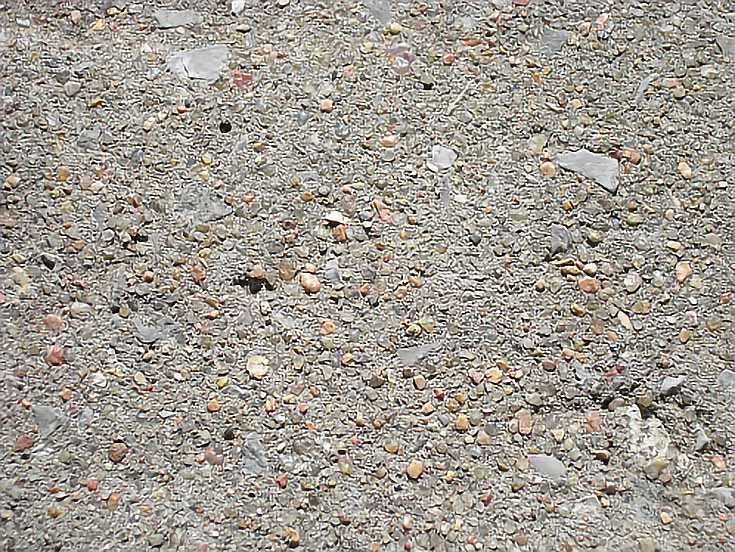Found texture is any type of texture you encounter in day-to-day life. It can be dramatic or subtle, organic or inorganic. If you can capture the pattern on paper, then it’s “found” texture.
Today, I want to talk about ordinary concrete texture, and how you might use it in your colored pencil drawings. Let’s start with the basics.
1. There are many types of concrete texture
The beautiful thing about concrete is that not all concrete is created equal. Some is quite smooth and produces subtle texture. Some is rough and dramatic. Sometimes the pattern is more natural. It all depends on the function of the concrete, its age, and the patterns worn into it.
Here is a section of concrete taken from the sidewalk leading to our front porch. See how even, yet random it is? The texture it produces is a wonderful addition to many kinds of drawings.
Some concrete also has a pattern impressed into it, like maybe a leaf or a footprint.
Because concrete takes so many forms, it presents countless opportunities for capturing found texture. Cracks add an entirely new dimension to concrete, and are well-worth exploring.
2. How to capture concrete texture
If at all possible, gather several samples from each location. Try different colors of pencil, different combinations of colors, and different stroke types.
Try different types of paper, too. I do a lot of texture capturing with 24-pound ink jet paper because the standard size (8-1/2” x 11”) is easy to handle and transport. It’s heavy enough to handle most surfaces, but also light enough to allow for the capture of most textures.
Try lightweight papers such as tracing paper. The cracked sidewalk seen above produces only shadowy values with 24-pound ink jet paper, but if you lay down tracing paper and have a careful touch, you’ll end up with much more defined lines and shapes.
You can also capture concrete texture directly onto your artwork.
Start by laying a clean sheet of paper between the concrete and your drawing paper (to keep your artwork clean). Use light to medium pressure in the area where you want the texture to appear – perhaps you’re needing texture for a rock or brick wall. It’s best to begin with light pressure to see what the texture looks like, and then increase the pressure or do multiple layers if needed.
You can also use found texture by:
• Layering smooth color over the area as a base color, then adding texture over that base color with the same or a different color
• Capturing texture, then shading smooth color over it.
• Impressing the texture into your paper without color, then glazing color over the impressed texture using blunt pencils or the sides of pencils.
3. Some uses for concrete texture
You can always enhance the visual texture of rough still life elements such as pottery, ceramics, and statuary. Even a quick brush of texture will add a touch of realism and sponteneity to your still life drawing that is hard to achieve without it.
And have you noticed the maps in some fantasy books? What better way to capture the texture, feel, and look of ancient (or maybe not-so-ancient) world than by capitalizing on the variety of found texture? This is a fantastic use for texture.
Basically, if you’re creating any kind of illustration from scratch and are looking for shortcuts and time savers, take a look at the concrete around you. The ways to combine found texture, colored pencil, your favorite subjects and your favorite papers are limitless!
This post may contain affiliate links.



